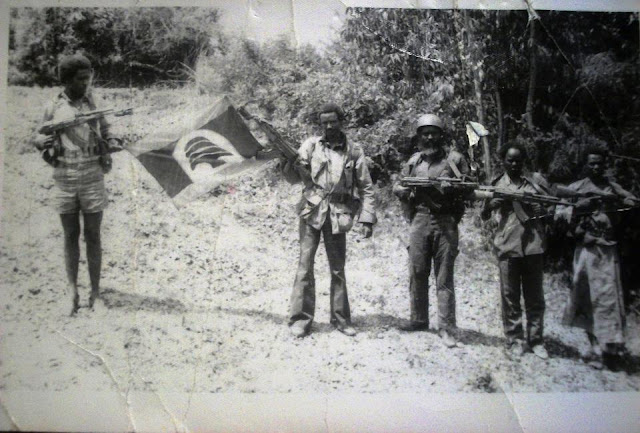The Oromo people of southern Ethiopia this week are mourning the death on March 3rd of Abdulkarim Ibrahim Hamid (nom de guerre: Jara Abba Gadaa (also spelled Jaarraa Abbaa Gadaa)), a founder of the Oromo Liberation Front (O.L.F.) and its armed wing the Oromo Liberation Army (O.L.A.), a key player in the decades-long struggle for a separate Oromo state in southern Ethiopia. Hamid was 77 years old and died of kidney failure in Yemen, where he had been living in exile.
Hamid was born in 1936 in eastern Oromia (also spelled Oromiya) and in 1967—during the reign of Emperor Haile Selassie—joined the Bale rebel movement of Gen. Wako Gutu. After serving a five-year prison term in Somalia, he returned to Oromia in 1976, where he helped found the O.L.F. By this point, Selassie, who claimed Oromo ethnicity among his mixed ancestry, had been deposed by the Communist regime of Mengistu Haile Mariam, which ushered in a period of ethnic insurrection by ethnic groups formerly loyal (of only uneasily) to the Emperor. This period was complicated by Somalia’s aggressive territorial claims on southern and western Ethiopia, including a Somali claim that the Oromo, like the Ogaden, were in fact simply western Somalis, an issue which tore at the loyalties of some Oromo separatists.
 |
| Jarra Abba Gadaa (center, next to flag-holder), with O.L.A. rebels in 1978. |
The two Oromo factions reconciled in 2000, and Hamid was a key figure in the two groups’ successor organization the United Liberation Forces of Oromia (ULFO), later renamed the Front for Independent Democratic Oromia (FIDO). Zenawi died in 2012, but Oromo rebels remain an armed opposition to the still-Tigray-dominated successor government.
There are currently attempts to bring Hamid’s body home to Oromia from Yemen for burial.
[Also, for those who are wondering, yes, this blog is tied in with a forthcoming book, a sort of encyclopedic atlas to be published by Auslander and Fox under the title Let’s Split! A Complete Guide to Separatist Movements, Independence Struggles, Breakaway Republics, Rebel Provinces, Pseudostates, Puppet States, Tribal Fiefdoms, Micronations, and Do-It-Yourself Countries, from Chiapas to Chechnya and Tibet to Texas. Look for it some time in 2013. I will be keeping readers posted of further publication news. (Meanwhile, if you still have money burning a hole in your pocket, an excellent way to support the “Springtime for Nations” blog is by considering donating a volume to the “Springtime of Nations” Research Library via the “Springtime of Nations” Amazon wish list.)]



No comments:
Post a Comment